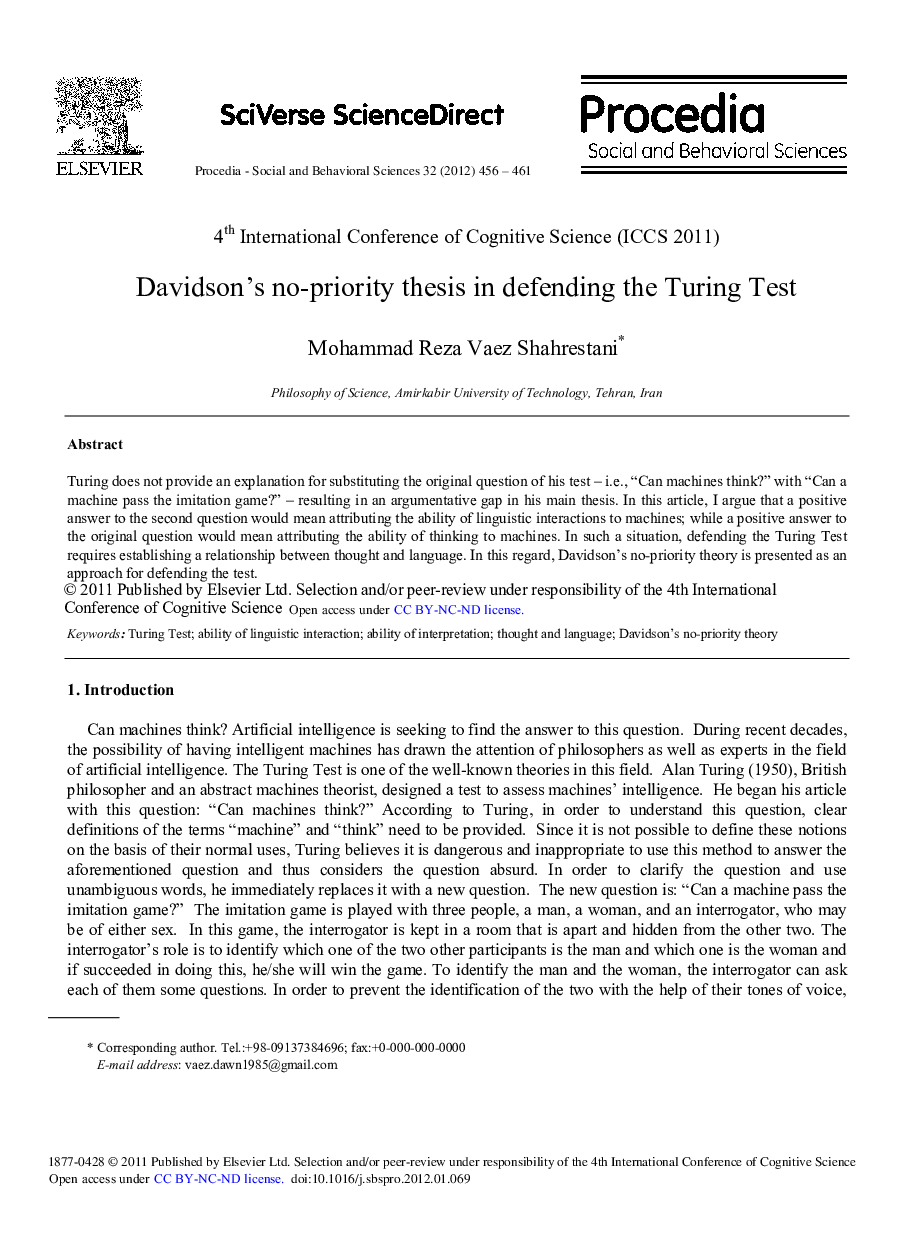| Article ID | Journal | Published Year | Pages | File Type |
|---|---|---|---|---|
| 1123037 | Procedia - Social and Behavioral Sciences | 2012 | 6 Pages |
Abstract
Turing does not provide an explanation for substituting the original question of his test – i.e., “Can machines think?” with “Can a machine pass the imitation game?” – resulting in an argumentative gap in his main thesis. In this article, I argue that a positive answer to the second question would mean attributing the ability of linguistic interactions to machines; while a positive answer to the original question would mean attributing the ability of thinking to machines. In such a situation, defending the Turing Test requires establishing a relationship between thought and language. In this regard, Davidson's no-priority theory is presented as an approach for defending the test.
Related Topics
Social Sciences and Humanities
Arts and Humanities
Arts and Humanities (General)
